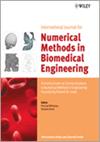Second-order explicit integrator via composition for coupled rotating rigid bodies applied to roller cone drill bits
引用次数: 1
Abstract
We present a derivation of the equations of motion of a roller cone bit as an example of coupled rotating rigid bodies and apply a state-of-the-art numerical integrator to produce an algorithm for use in a bit dynamics software application. The equations are derived using the virtual power method, which naturally handles the constraint between the bit body and the cones. These equations are fully three-dimensional (three degrees of freedom for the body, plus one degree of freedom for each cone) and nicely parallel to the equations of motion of a single rigid body. We apply the composition of adjoint first-order integrators (reminiscent of the approach used earlier to derive an explicit midpoint Lie method (Int. J. Numer. Meth. Eng. 2005; 63:2171–2193) to produce an algorithm that maintains the properties of the original three degree-of-freedom integrator: second-order convergence, symplecticness, remarkable accuracy, and momentum conservation. This algorithm can be applied to other applications where one or more rigid bodies with a single rotational degree of freedom are attached to another rotating rigid body. Copyright © 2007 John Wiley & Sons, Ltd.应用于牙轮钻头的耦合旋转刚体二阶显式积分法
作为耦合旋转刚体的一个例子,我们给出了牙轮钻头运动方程的推导,并应用最先进的数值积分器来生成一个用于钻头动力学软件应用的算法。该方程采用虚功率法推导,自然地处理了钻头体与锥体之间的约束。这些方程是完全三维的(物体有三个自由度,每个锥体有一个自由度),并且很好地平行于单个刚体的运动方程。我们应用伴随一阶积分器的组合(让人想起之前用来导出显式中点李方法的方法)。j .号码。冰毒。Eng。2005;63:2171-2193)产生一种算法,该算法保持了原始三自由度积分器的特性:二阶收敛性,辛性,显著的准确性和动量守恒。该算法可应用于一个或多个具有单一旋转自由度的刚体附着在另一个旋转刚体上的其他应用。版权所有©2007 John Wiley & Sons, Ltd
本文章由计算机程序翻译,如有差异,请以英文原文为准。
求助全文
约1分钟内获得全文
求助全文

 求助内容:
求助内容: 应助结果提醒方式:
应助结果提醒方式:


